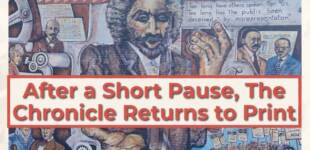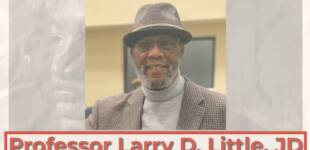Sunday School Lesson

By Elder Richard Wayne Wood
Christ’s Once-for-All Sacrifice
Scriptures: Hebrews 9:23 – 10:25
By the end of this lesson, we will:
**Identify how a person enters the holiest place;
*Explain why Christ had to die only once;
*Recruit an accountability partner for mutual encouragement in love and good works.
Background: The writer of Hebrews from its first verse of the first chapter explains the superiority of Jesus Christ to all previous ways of purification of sin. Hebrews reminds of the necessity for continual sacrifice because the people and priests continued to sin. The need of all mankind was for a perfect priest and a perfect sacrifice that would once and for all remove sin. The lesson highlights God’s provision for that perfect priest and perfect sacrifice.
Lesson: Absolute Necessity (Hebrews 9:23-28). “And almost all things are by the Law purged with blood; and without shedding of blood is no remission” (verse 22). This verse explains the why of verses 23-28. “Therefore, it was necessary for copies of the things in the heavens to be cleansed with these, but the heavenly things themselves with better sacrifices than these” (verse 23). In the Old Testament sacrifice was necessary according to the Mosaic Covenant; but Christ is bringing a New Covenant that requires a better sacrifice that supersedes those of the Levitical system. “For Christ did not enter a holy place made with hands, a mere copy of the true one, but into heaven itself, now to appear in the presence of God for us” (verse 24). Christ did not enter the man-made tabernacle which is representative of a heavenly place where God was met, but Christ’s High Priestly ministry is exercised in the perfect tabernacle of heaven – and He will appear before God – whereas the earthly priests appeared before smoke. “Nor was it that He would offer Himself often, as the high priest enters the holy place year by year with blood that is not his own” (verse 25). Christ is the real High Priest who offered the real sacrifice for sin – His own blood – “once and for all.” “Otherwise, He would have needed to suffer often since the foundation of the world; but now once at the consummation of the ages, He has been manifested to put away sin by the sacrifice of Himself” (verse 26). Christ’s sacrifice covered sin from creation forward. The Messiah came to do what animal sacrifices could not and in His sacrifice all eras and ages came together and were consummated – He was the perfect sacrifice. Verses 27-28, “A man dies once, and after that everything is fixed and settled, and he answers for his doings at the judgment. One life, one death – then everything is weighed and the result declared: after this the judgment.” So, Christ comes, and dies once; and after this, for Him also the result of what was done, namely, the salvation of those who look for Him. He dies once, and then reaps the fixed result, according to the analogy of the human race, of which He became a member and representative.” (Spurgeon). “So, Christ also … will appear a second time for salvation without reference to sin, to those who eagerly await Him” (verse 28). Christ’s second coming is not to remove sin, but to rescue the believer who is the recipient of His salvation work.
Weak Sacrifices (Hebrews 10:1-4). “For the Law, since it has only a shadow of the good things to come and not the very form of things, can never, by the same sacrifices which they offer continually year by year, make perfect those who draw near” (verse 1). Because the Levitical system provided no way to enter the presence of God – it was a “shadow” – a pale reflection of what the “once for all” sacrifice would do – in the very presence of God. Verses 2-3 note that the yearly sacrifice served as a reminder of the deficiency of the sacrifice to remove sin – there was an intended consciousness of sin. “For it is impossible for the blood of bulls and goats to take away sins” (verse 4). Animal sacrifices could cover sin – thus the “Day of Atonement,” but animal blood could not “take away sins.” Removal of sin is what was needed, but the sacrifices could not provide removal, they could only provide cover.
Perfect Sacrifice (verses 11-14). “Every priest stands daily ministering and offering time after time the same sacrifices, which can never take away sins;” (verse 11). Thousands of priests stood offering ineffective sacrifices that only covered sin – it was a continual job that required standing, the priest could never sit down. “But He, having offered one sacrifice for the sins of all time, sat down at the right hand of God” (verse 12). Jesus “sat down at the right hand of God” having finished His work of sacrificing for sin. “For by one offering He has perfected for all time those who are sanctified“ (verse 14). The work of Jesus is effective only for “those who are sanctified.” Jesus’s work of salvation is capable of saving everyone, but it is only effective in saving “those who are sanctified” – those who are set apart for God.
Implications (verses 19-25). “Therefore, brethren, since we have confidence to enter the holy place by blood of Jesus” (verse 19). The high priest entered the holiest place with fear and trembling, but we can “enter the holy place” with boldness – confidence in Christ’s blood sacrifice. “By a new and living way which He inaugurated for us through the veil, that is, His flesh” (verse 20). The writer makes an analogy between the veil that stood between God and man and the body of Jesus. Jesus’s body was “torn” and so was the veil, each indicating that now we can come to God boldly – with confidence. “And since we have a great priest over the house of God, let us draw near with a sincere heart in full, assurance of faith …” (verses 21-22). The writer expresses that we can draw near to God in a way unavailable to those under the Old Testament Covenant. We stand on the promise that because of Christ’s death on our behalf, our sins have been forgiven. “Let us hold fast … for He who promised is faithful;” (verse 23). We must have a firm grip on the basics of our faith, which is grounded in the integrity of Christ. We stand strong because we trust in His faithfulness. “And let us consider how to stimulate one another to love and good deeds” (verse 24). The writer is speaking of a mutual activity, where believers encourage one another, not one where leaders direct everyone in what to do. “Consider how” seems to suggest that loving one another will not just happen, but Jesus meets us in one another to stir each other up to loving, active faith – we must be intentional. “Not forsaking our own assembling together … but encouraging one another; and all the more as you see the day drawing near” (verse 25). Collective and corporate worship is a vital part of spiritual life. The writer makes the statement “All the more” in reference to the second coming of Christ – we must encourage one another increasingly – comfort, warn, and strengthen one another in anticipation of the day. (Standard Lesson Commentary 2024-2025, The MacArthur Study Bible, The Modern Life Study Bible, Experiencing God Bible, The Jesus Bible and The Oxford Bible Commentary).
For Your Consideration: What “necessary” actions do you need to take now that Christ has completed His own “necessary” actions?
Application: Inventory – Are you presently drawing near (verse 22), holding on (verse 23), and considering (verse 24)? Recruit an accountability partner for mutual encouragement in love and good works.
FYI: Forsyth County Sunday School Union meets in person every third Sunday, 1:30 p.m. at a member church. Contact your Sunday School superintendent for more information.








